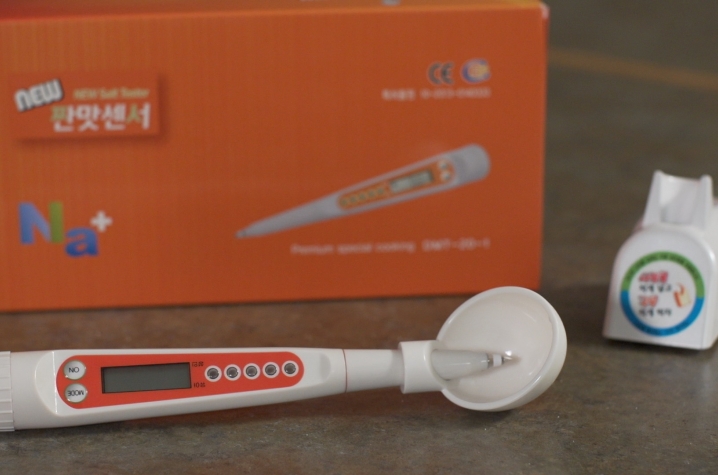College of Nursing Study Transitions Patients, Families to Low-Sodium Diet With Electronic Salt Spoon

LEXINGTON, Ky. (April 27, 2015) — Heart disease patients are advised by doctors to reduce the amount of sodium in their diets to prevent a cardiac event. But adapting to a low-sodium diet requires more than just laying off the table salt. Sodium is hidden in a number of household food products, such as canned soups, frozen pizza and white bread.
Faculty members in the University of Kentucky College of Nursing are helping patients and their families monitor the amount of sodium in their foods through the use of an electronic salt spoon. The device, which can be used in everyday cooking, measures the exact amount of salt in foods.
Misook Lee Chung, an associate professor in the College of Nursing, is leading the Family Sodium Watchers Program, which educates patients and families about low-sodium diets through the use of the salt spoon. The study was awarded funding from the National Institute of Nursing Research. A three-month pilot study found individuals and family members who used the salt spoon were successful in decreasing the amount of salt in their diets.
"This device can actually detect the amount of salt in food," Chung said of the salt spoon. "You just use the salt spoon, detect the amount and control the portion."
Chung helps patients gradually re-train their taste buds to enjoy low-sodium foods. Through this gradual process of learning to cook and eat with smaller portions of sodium, patients are more likely to change eating habits for the long-term.
Heart disease patients are recommended to consume 2,000 to 3,000 milligrams of sodium per day, which is also the recommended amount of sodium recommended for maintaining a healthy diet. Sodium serves many essential functions in the body, such as working muscles and nerves, but too much sodium can result in high blood pressure, heart disease and stroke. Surprisingly, table salt is not the leading source of sodium in the American diet. Sodium is hidden in a variety of foods, including vegetables, processed foods and restaurant meals.
The Family Sodium Watchers Program, conducted at the College of Nursing, will recruit 220 patients and their families, tracking long-term health outcomes. As part of the program, patients and families will learn how to cook and shop for low-sodium foods through communication tools such as video conferencing through Skype and iPads. These digital tools will enable the researchers to educate families in rural parts of Kentucky. Chung said food is a family activity, so including family members in the diet modification process is essential.
"Family members, when they don't know how to choose low-salt foods at the grocery, and they cannot cook the low-salt foods, cannot support our patients," Chung said. "So we have to educate them together."
For more information about participating in research, including current studies at UK and the national ResearchMatch registry, please visit ukclinicalresearch.com or call 859-257-7856.
If your family is interested in participating in this study, please click here for more information.
MEDIA CONTACT: Elizabeth Adams, elizabethadams@uky.edu




